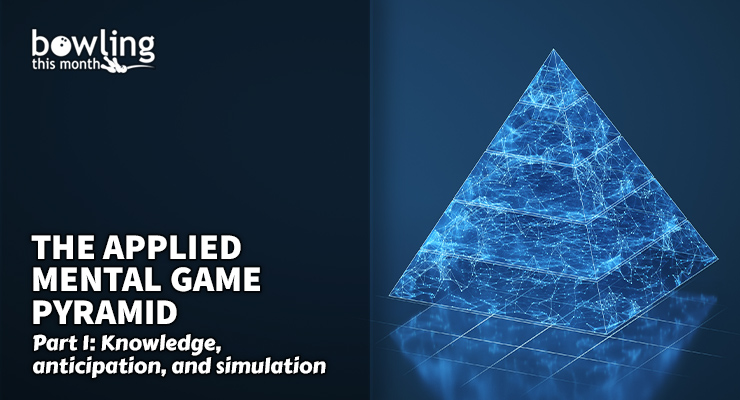Article Contents
- 1. The Applied Mental Game Pyramid
- 2. Knowledge
- 2.1. The human response
- 2.2. Individual differences
- 2.3. What are your best emotions?
- 3. Simulation
- 3.1. Bowling-specific discomfort training
- 4. Anticipation
- 4.1. Prepare for the worst
- 5. Final remarks
- 6. References
Note: This article is only available to Bowling This Month subscribers.
As a coach, I strongly advocate a holistic approach to our sport. To ensure optimal performance—achieving success when it matters most—an all-inclusive approach ensures that you control each domain of training and preparation. From on-lane skill and strategy development to training and recovery, every element is important in achieving top-level goals. Each of these areas should be grounded in a periodization plan (volume, frequency, and intensity variations) to ensure peak performance at specific moments throughout the competition calendar.
I have seen that the mental game is a fundamental element of high performance for bowlers who achieve their best at major international competitions. Accordingly, with the intent to aid bowlers in preparing more extensively, I have developed the Applied Mental Game Pyramid. This pyramid consists of the three foundational in-training domains and the three in-competition domains, designed to help bowlers perform better in major competitions.
The Applied Mental Game Pyramid will be presented as a two-part series, starting with an introduction. I’ll then share insights into the in-training elements that form the foundation of the pyramid: knowledge, simulation, and anticipation.
The Applied Mental Game Pyramid
One of the most vital aspects of high performance is staying present in the competition moment and avoiding unnecessary distractions. Unfortunately, some bowlers are not prepared for these higher-level stressors due to a lack of access to sports psychology tools or a lack of commitment to the mental game.
As with all sports, bowlers need to commit training time to the mental game and remain vigilant in competition, using proactive strategies, awareness, and reactive responses for intervention purposes.
The ability to focus attention on target stimuli relevant to the sport context and specific discipline while inhibiting irrelevant information…[is] considered a key aspect of optimal performance.
-Crivelli and Balconi (2022)
To foster an applied approach to the mental game, I developed a six-level pyramid consisting of three in-training domains and three in-competition…
Click Here to Read the Full Original Article at Bowling This Month…
